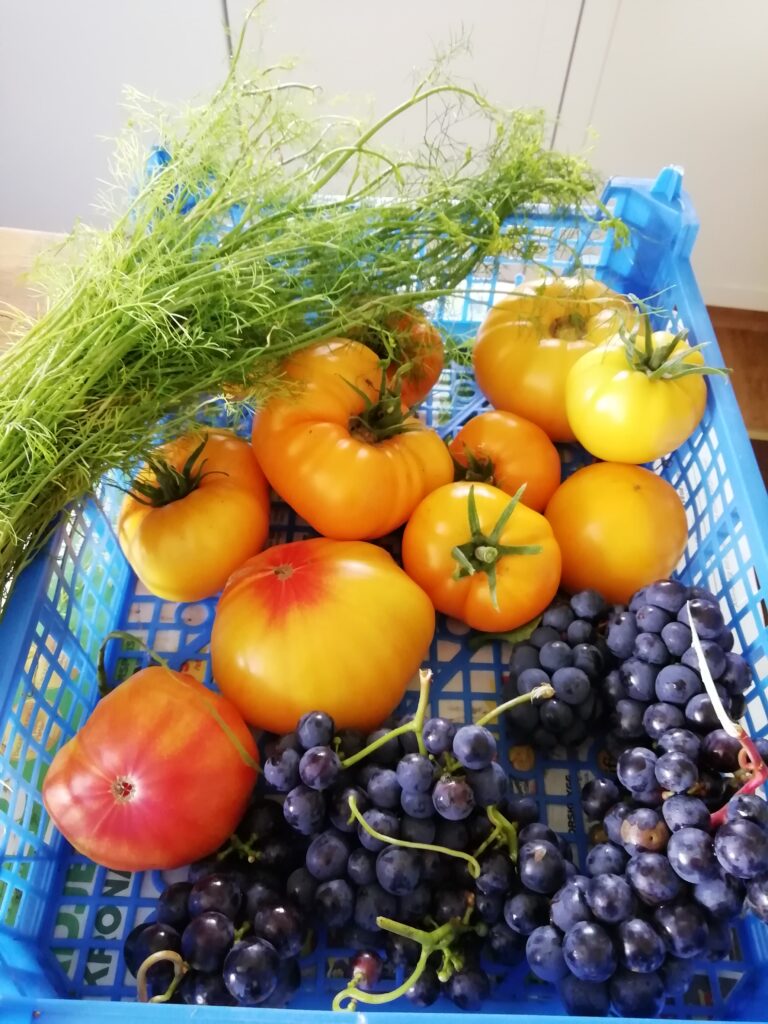English below
Hösten är för många en tid med tecken på förfall. Växter vissnar ner, bladen börjar falla av träden, dagarna blir svalare och kvällarna mörkare igen.
Om man bortser från dessa tecken på att vintern närmar sig är det också överflödets tid, en tid där odlingarna visar om valet av frö var gott och om man förmått att förvalta fröets växtkraft. Odlingslådorna börjar nu gapa tomma, redo för vintervila. Ännu finns det mangold kvar att skörda liksom majrovor och dill. Störbönorna behöver bli något större, sedan kan de läggas i burkar och konserveras på gammalt vis.
Växthuset innehåller fortfarande både tomater, paprika, chili och basilika. Tomaterna vi odlat i år har mestadels varit stora, gula bifftomater som blir bra mixade till tomatkross som kan förgylla vinterns grytor. Paprikorna behöver någon vecka till på sig för att få färg för att sedan hamna hela i lag eller i chutney. Basilika har torkats för att kunna användas till kryddning och det som återstår får bli en rejäl omgång pesto.

Autumn is for many a time with signs of decay. Plants wither, the leaves begin to fall from the trees, the days become cooler and the evenings darken again.
If you ignore these signs that winter is approaching, it is also the time of abundance, a time when the crops show whether the choice of seed was good and whether one has managed to manage the seed’s vigor. The cultivation boxes now start to empty, ready for winter rest. Still, there is spinach left to harvest as well as turnips and dill. The climber beans need to be slightly bigger, then they can be put in jars and preserved in the old way.
The greenhouse still contains both tomatoes, peppers, chili and basil. The tomatoes we have grown this year have mostly been large, yellow steak tomatoes that will be made into tomato crush that can gild the winter stews. The peppers need a few more weeks to get color and will then end up pickled or as chutney. Basil has been dried to be used for seasoning and what remains can be a large bowl of pesto.